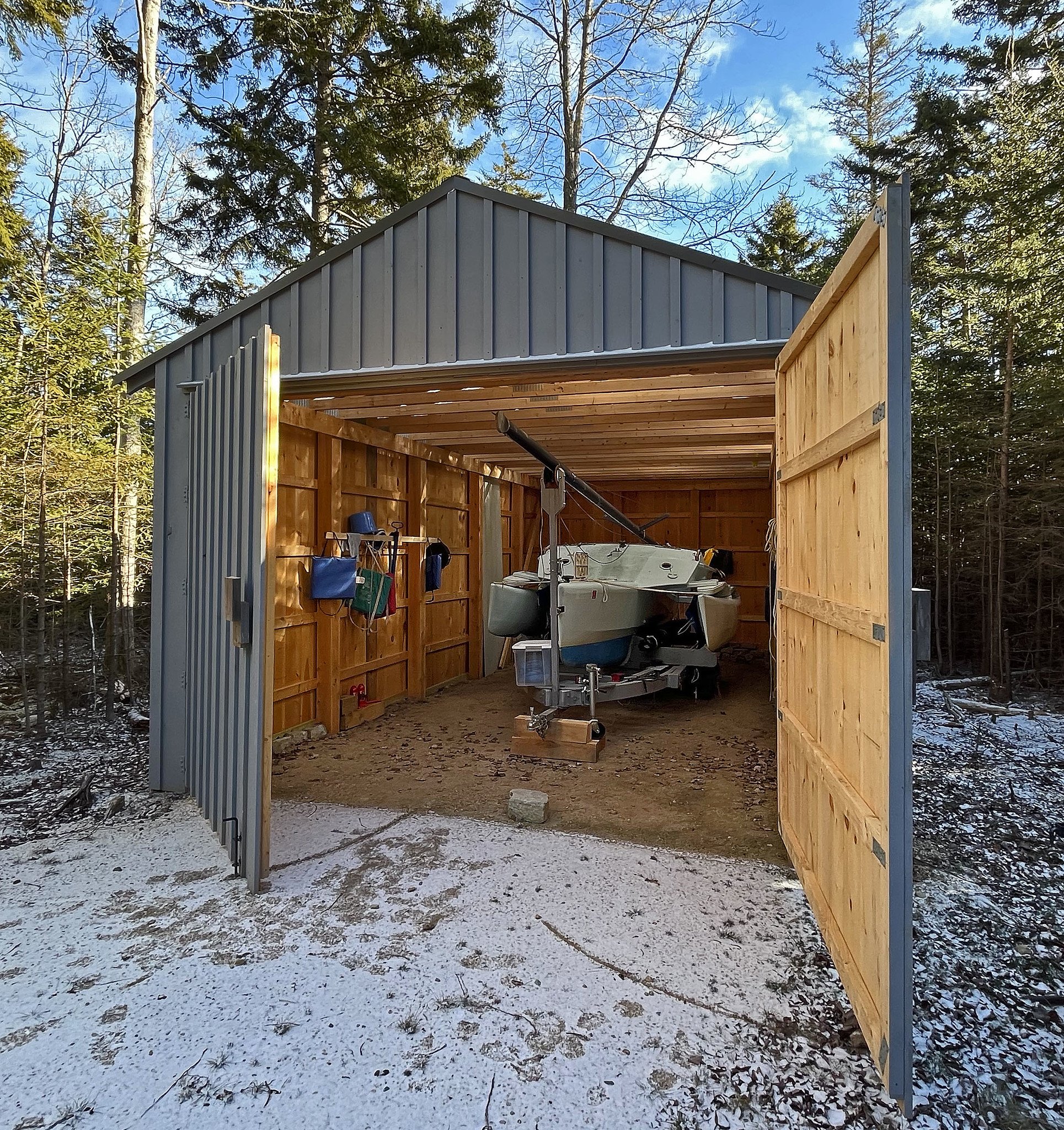We continue exploring the variability of local boat sheds (boat houses). Here you see a classically spare boat shed tucked into a stand of spruce. It’s a relatively recent construction by a neighbor to enclose a special vessel.
When the door is swung open, you see the trimaran SYZYGY sitting there contentedly like a huddled ptarmigan with her “wings” tucked in:
There’s a lot to say about this boat, so please bear with me. First, there is her name. As the star-gazers know, syzygy (““SIZZ-uh-jee“) is an English language word derived from the Greek. It means the alignment of three or more celestial bodies, such as a syzygy of the sun, moon, and earth that sometimes leads to our seeing an eclipse.
Second, as the sailors know, a trimaran is a three-hulled vessel that differs from a catamaran by having one more hull, but both names are derived from the ancient South Asian Tamil language. In that area, the south Pacific islands and landmasses were in large part first populated by exploring Polynesian sailors who came in multi-hull vessels (usually two-hulled outriggers, some huge).
Third, many (if not most) multi-hull boat owners still refer to the major parts of their vessels by using the Polynesian terms for them: The “vaka” is the main hull, an “ama” is an outrigger hull, and an “aka” is the support connecting an outrigger hull to the main hull, according to the literature.
Finally, back to the petite SYZYGY (her on-the-hull name is in all capital letters). She’s 21’ long by 16’ wide when the amas are fully spread. She was designed and built by the famed multi-hull pioneer John Marples, who now resides in Penobscot, Maine.
(Images taken in Brookin, Maine on January 9 [open door] and 12, 2025.)

